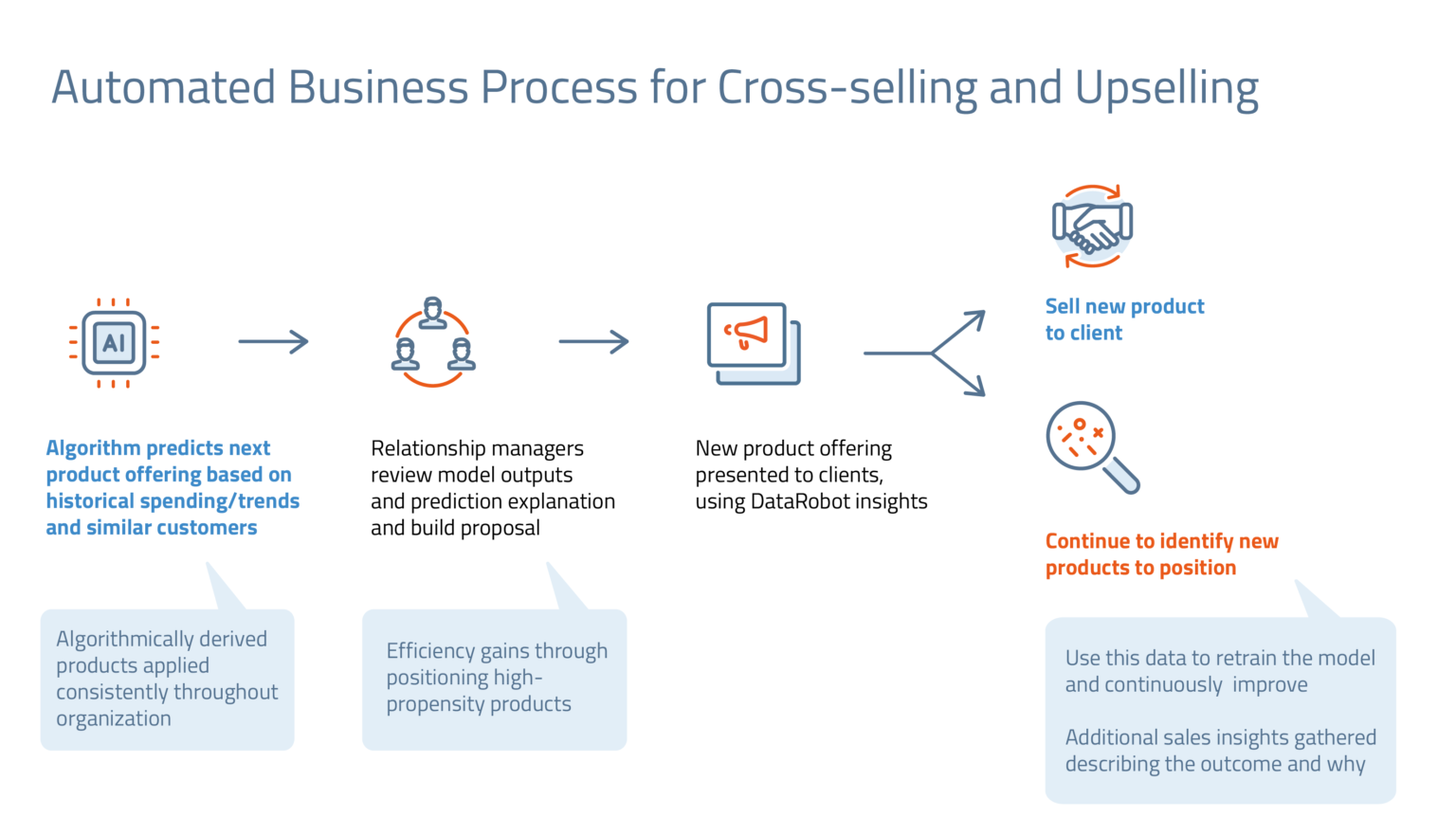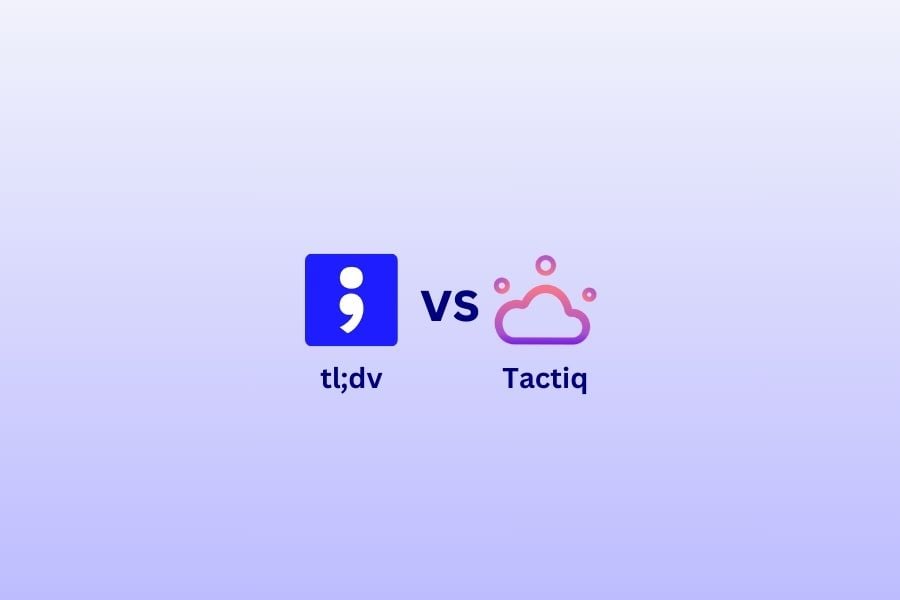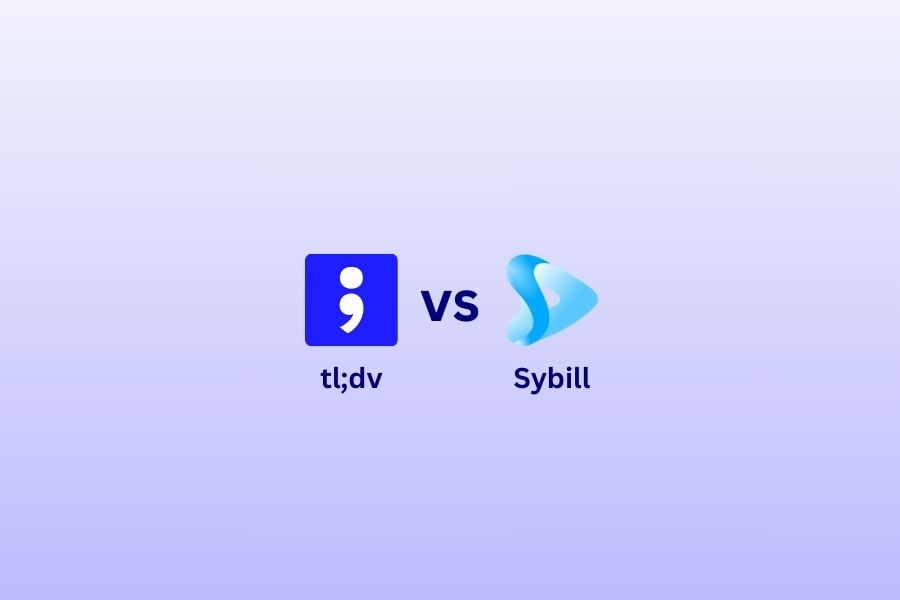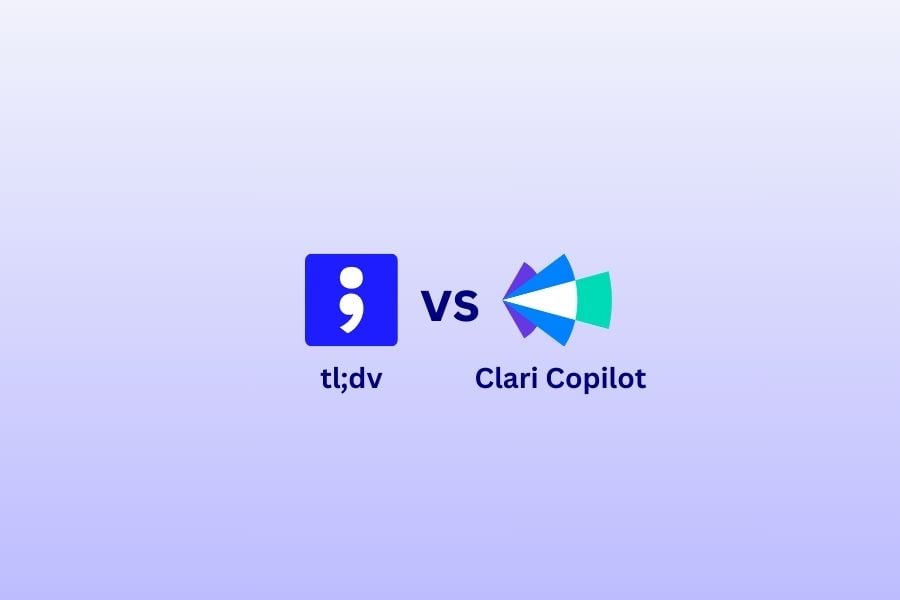Customer success is one of those roles that can be incredibly rewarding and utterly draining in equal measure.
While Sales may get the glory (and the commission), Customer Success is the one role that has to pull of customer satisfaction and retention.
Customer Sucess is first point of contact. The punching bag for complaints. The problem solver.
You need to know every detail of your business. What’s more, you need to understand the ins and outs of your customers’ businesses, too.
It’s a tough job. So we’re going to tell you how AI can help. From task automation to lightning-quick analyses, we’ve got pleny of ideas on how to shake up Customer Success with the help of GPT-3.

You’ve no doubt seen the buzz around ChatGPT. While the chatbot’s ability to help us solve problems and quickly obtain information is outstanding, ChatGPT is also shining a light on how AI can be used in different professions overall.
There are a lot of Customer Success tools out there which make use of the same technology behind ChatGPT – that is: GPT-3, the self-learning language model. The more data these AI tools are fed, the smarter they become. For Customer Success teams looking to speed up the collection and processing of data, this is good news.

AI Has Been Used in Customer Success For Years
To be clear, AI in Customer Success is nothing new. Many CS teams have long been using AI tools to make life easier for themselves and better for the customer. One well-known benefit is how AI can provide customer insights in CSM platforms. But the use cases go way beyond that.
AI meant that – rather than fighting the fires of customer dissatisfaction – you can proactively create smoother experiences and happier customers. Be it through pre-empting their issues before they happen, or quickly providing insights to product management that help solve snags and frustrations.
AI also makes it easier than ever to provide highlyt tailored solutions to customers – without all the manual work and slow analysis.
Automated processes like ticketing and support systems have been revolutionized with AI, allowing CSMs to troubleshoot any problems quickly and take the time to give it the personal touches everybody wants.

A prime example of AI in CS can be found in the companies implementing IBM’s Watson as a customer service rep. Like ChatGPT, Watson is filled with data and can converse in natural language. The difference is that Watson is trained to represent a company for the purpose of interacting with customers. GM Financial and Vodafone are great examples of companies using the Watson engine to support their customers.
AI and Customer Success go hand-in-hand. ‘AI’ is longer just a buzzword but an actual, tangible part of the job. And the more AI is pushed forward, the faster and more efficiently Customer Success reps can do their jobs.
Quaking in your boots at the thought of losing your job to some binary code? Don’t fret. AI like GPT-3 should be seen as a resource for Customer Success teams. The opportunities for AI in customer success are huge. They’re not even limited to boosting engagement and ecommerce sales, as this list of top AI chatbots for smart brands and marketers by Attrock shows. They’ll redefine the role and come with new avenues to explore. This includes avenues that wouldn’t have been possible pre-AI advancements. So don’t be worried – be excited.

Day-To-Day Customer Success Tasks That GPT-3 Can Help With
Analyzing customer feedback
To stay ahead of the game, Customer Success teams need to be able to not collect customer feedback, but really understand it. Sometimes this is straightforward. Other times it can be like translating a language you don’t know half the letters of. Whether you’re doing qualitative or quantitative user research, making sense of what customers want and need can be a confusing process.
GPT-3 can help reduce the workload by analyzing customer feedback and pulling out trends or key takeaways. We’re only human, and when analyzing large amounts of customer feedback, it’s easy to overlook details, miss patterns, misinterpret data or even bring our own bias into the mix. AI can help overcome this. It doesn’t miss a detail, it sees patterns instantly, and it can analyze huge amounts of surveys, user interviews, and behavioural data in seconds.
Generating reports
GPT-3 takes data, connects the dots, and generates insightful reports. Customer Success teams will not longer have to manually and painstakingly throw together the relevant data in the a report format. Not when AI can generate an overview of the key insights in seconds.
Now that reports only have to take a second, Customer Success reps have way more time to spend speaking withc ustomers. The more time you’re able to dedicate talking to customers, the better your rapport with them will be. Let AI do the data work while you meet customers on a human level. Your customers will feel valued, which increases the likelihood of successful upsells or contract extensions.
Responding to complaints or queries
The customer service industry, in particular, has been revolutionized by the technological progress of recent years. AI-powered chatbots are now commonplace and can answer all the day-to-day queries with speed and accuracy, so Customer Success reps don’t have to spend time trawling through all the common complaints, or continously linking to FAQ pages.
Speaking of FAQs – did you know that AI can turn your FAQ pages into sources of information for Chatbots? AskAI recently launched a tool that makes your FAQs conversational. Customers ask questions, and the AI scans your FAQ material so it can deliver a human-like answer.
GPT-3 can even offer personalized responses based on the customer’s previous queries, cross-referencing your internal customer records and data for context. GPT-3 responses can therefore be truly unique to the customer – shaped not just by what they asked, but by who they are. The result? Customers feel heard – like a real person is addressing their problems.
And when support conversations really are handled by a human, you can still make use of AI. In fact, Intercom recently launched a tool that will summarize support conversations so that the problem and solution is neatly described for future reference.

Customer Segmentation
One of the best ways for CSMs to ensure that the customer experience is top-notch is by understanding each customer and what they need from your product or service.
GPT-3 can take customer data and segment it into different groups, allowing CSMs to provide more tailored solutions for each customer.
This is possible even on a super detailed level. For example, if a customer works in a niche industry, business segmentation can create a small sub-group of just a couple of customers that require more intense guides on a particular product feature.
The grouping could also be more general than that. GPT-3 can identify and label customers based on whether their business offers a service or physical products. Affiliate, eCommerce, SaaS – all these kinds of businesses have different needs, and allowing AI to categorize your customers according to their needs is a total lifesaver.
By grouping them together in multiple segments, you can build a picture of priorities for things like training, product development, and who your most valuable customers. This is essential for becoming a customer-centric organization.
Onboarding New Customers
Onboarding customers and clients can be time-consuming and tedious for CS teams. GPT-3 helps by taking the customer’s information, understanding their needs, and creating a personalized onboarding plan that is tailored to them. This will reduce the amount of manual work and provide more successful results in customer retention and satisfaction.
Onboarding can even be automated with email sequencing, pre-recorded webinars, or by scheduling specialized virtual training with segmented customers.
Searchable Databases
Every customer thinks their problem is individual. In reality, it rarely is. Anyone who’s ever worked in Customer Success knows that the same queries come up repeatedly.
Having a a well-documented and searchable database for Customer Service reps is obviously handy. However, GPT-3 can take this one step further by suggesting additional recommendations based on the customer’s questions. In other words, you’re not limited to what’s in the database. GPT-3 will fill in the blanks. Plus, it can present summaries of the database’s information in the most helpful possible format.
Customer Service reps no longer have to look up solutions manually or ask colleagues. Andf there’s no need to keep this internal. A GPT-3 powered fatabase of information can be rolled out directly to the customer, functioning as a comprehensive yet quick reference guide.
Depending on how the AI is set up, it can also help with common troubleshooting, and suggest the best solution without a human Customer Service rep having to get involved at all.
Fresh Ideas & New Perspectives
You’ll often find in Customer Success that many of the queries and issues you deal with daily are the same. It can often feel like repeatedly rehashing the same responses and actions in an infinite loop.
But when thinking of a “better” way to do things, breaking out of the tried and tested processes, responses, and how things have always been done can be hard.

AI can help, though, and with an interactive interface such as Chat GPT, you can ask prompts to help drive innovation in Customer Success.
This could be different ways to support customers directly, or even asking it for ideas on different ways to deliver solutions.
It can provide a welcome break to an echo chamber that can occur in a business by bringing in a less biased, fresh perspective on the activity.
One way to do this is by using prompts; some examples include:
- What innovative ways can Customer Success teams engage with their customers and provide value?
- How can Customer Success teams use technology to improve their effectiveness and efficiency?
- What are some examples of companies successfully implementing innovative strategies in their Customer Success efforts?
- How can Customer Success teams stay up-to-date with the latest trends and developments in their industry to drive innovation?
- What are some strategies for using customer feedback to drive innovation and improve the customer experience?
- How can Customer Success teams collaborate with other departments, such as product development and marketing, to drive innovation and improve the overall customer experience?
- What metrics can Customer Success teams use to measure the effectiveness of their innovative strategies and initiatives?
GPT3 Tools & Software For Customer Success Teams
ChatBots
While Chatbots for companies have got a bad rap in the past, they are getting slicker, smarter, and almost indistinguishable from a real-life person. Emojis and all!
With the advancements in natural language processing models and the culmination of getting all the knowledge and information into a chatbot, they can save a lot of time and effort.
While you can build your own chatbot using GPT-3, there are also tools you can use. Conversica, Intercom, Drift, and IBM’s Watson are all great tools recommended industry-wide.
This is definitely a CS use case worthwhile to consider. In a case study by LeadDesk, a pension company (Varma) created their Helmi chatbot to help with customer success. It saved 330 hours of time for the customer success team by making customer support 85% AI-driven. To put into perspective, that’s the equivalent hours of more than two full-time employees.
Meeting Recording Software
Meeting recording software is incredibly helpful for internal team meetings, as a way to keep track of action points, insights and questions. But it can also be a total game changer for Customer Success and Support teams.
Using an GPT3 meeting tool such as tl;dv has many benefits for CSMs. At its heart, it captures and shares the voice of the customer for the wider organization. Often, when customers express frustrations or needs, this information needs to be relayed back to senior management, Sales, marketing or developers.
Writing anecdotes in an email is one way to relay this, but it lacks impact. tl;dv allows Customer Success teams to record, transcribe, clip, highlight customer calls – thereby capturing the customer’s own words (complete with all those emotional nuances).
It’s super easy to post these customer insights to Slack, Hubspot, Salesforce – and the result is more empathy for the customer across an entire organization.
tl;dv uses GPT-3 to automatically identify key moments in customer meetings, timestamping them, and providing summaries. You can also tag specific stakeholders directly at any part of a recording that’s worth revisiting. In short, it simplifies and speeds up meeting documentation and follow-ups.
Is the customer experiencing a bug? Are they unhappy with the pricing structure? Do they really want to see a new feature added? With shareable video-based insights directly from the customer, it’s easier than ever to get stakeholders to understand the customer and make decisions based on their needs.
As mentioned, Customer Success teams often have to take a lot of the customer-facing flack when things go wrong. Still, they have an ongoing relationship with the customer. If they are doing something right, those snippets of praise can be clipped and shared. Not only does this help boost morale, but it also gives employees positive receipts to ask for those all-important pay raises. *wink wink*

Adding a smart AI-meeting tool to your CSM toolbox makes your organization even more customer-centric. Everybody within the business can hear, see, and experience the customers’ feelings, making them more inclined to advocate and champion them.
No more leaving CSM to deal with ALL the crap that comes back. With a tool like tl;dv, EVERYONE can take ownership of their space, and CS teams are no longer left in a silo.
CS teams are the litmus test of customer-based health. tl;dv makes sure they have the evidence to back up their feedback and keep everybody happy!
Sentiment Analysis
Sentiment analysis looks at customer feedback and reviews to determine how customers feel about your products, services, and overall experience with your brand. Traditionally this can be done manually by reading reviews, looking at social media, and looking for hot words, emojis, etc. It’s important, but it can be a heavy workload to be done manually.
But with advanced AI-powered tools, sentiment analysis is getting smarter and faster. Automated tools can provide an in-depth text or voice analysis of customer feedback to determine if it’s positive, negative, or neutral. The data can be used to gauge customer satisfaction levels daily and help you identify areas for improvement. Even though the information being scanned is qualitative and subjective, AI can remove many of the main issues of bias and turn them into a more quantitative output.
Some great tools for this include Lexalytics and Reputation. Even elements of these tools can be used for upsell detection. Suppose customers are expressing frustrations, and there is a solution. In that case, the sentiment analysis can flag to the CSM team to offer various options. Not only does this help the bottom line and revenues of the company, but it also means that the customer feels like they are being listened to and that your company can provide the solutions to their pains.

Preventing Churn & Improving Retention
Again, leveraging other AI tools and benefits such as sentiment analysis, AI can help manage the churn of your customer base. Tools such as Totango have in-built health check systems driven by AI to quickly alert CSMs when customers may be unhappy or thinking about leaving.
In an area where KPIs rely on customer retention, and the projection of customer revenues is the key to innovation and development for a company, this is a massive thing to be tracking. AI can help you stay one step ahead. Leveraging predictive analytics, AI can spot patterns in customer behavior and alert you when customers are likely to leave. CSM teams can reach out and work toward customer engagement and loyalty before it’s too late.

The Future of GPT and Customer Success

While the AI and Customer Success transformation is still in its early days, there are already so many ways AI and machine learning can benefit CS teams.
In a weird meta way, many of the GPT-3 tools being developed for Customer Success managers and teams are no doubt using their own tools and learnings for themselves. This means that the more these tools get used, the more the customers using them provide their own feedback and the better they become, making it even more seamless.
This is an excellent reason why early adoption of GPT-3-based Customer Success managements tools can help companies in the long term. By buying in, trying, and testing, you can help guide the tools for the future you want, shaping the roadmapt of these AI tools with your own pain points and requirements.
So take Customer Success to the next level by hopping onboard the AI train, saving time and money in the process. All aboard!







